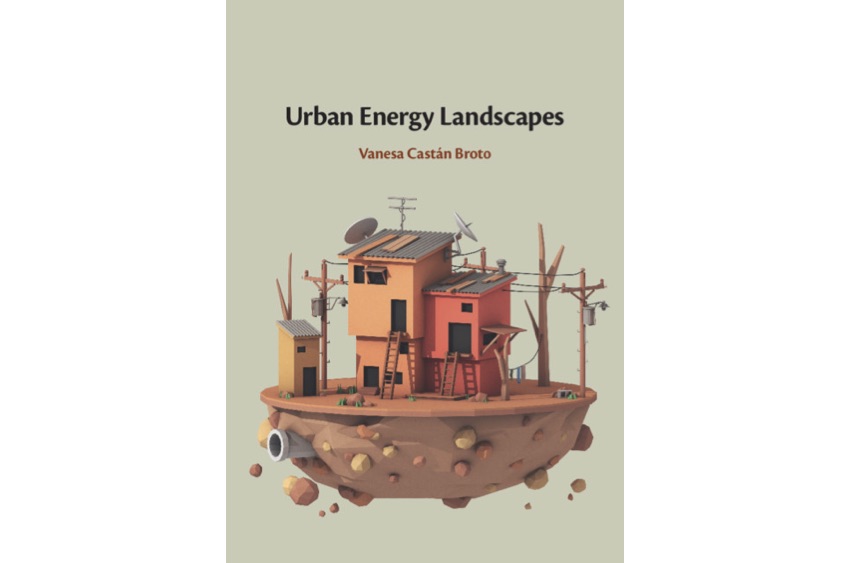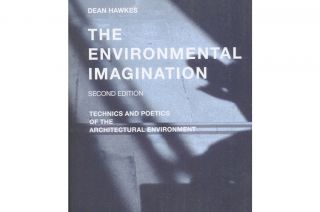
www.buildingsandcities.org/insights/reviews/urban-energy-landscapes-review.html
Urban Energy Landscapes

by Vanesa Castán Broto. Cambridge University Press, 2019, ISBN: 9781108297868
Shula Goulden (Tel
Aviv University) explores how Urban Energy Landscapes can help to capture the
heterogeneity of urban energy infrastructures, and how these need to change to
tackle the challenges of a changing climate.
What radical transformations do urban energy infrastructures need to undergo in an era of climate change? Urban Energy Landscapes rises to the formidable challenge of making sense of this complex set of issues. The concept of the 'urban energy landscape' put forward by the book represents the 'connective tissue' (p.39) between energy use (including light, heat, mobility and communications), urban form and everyday practices that are unique to each city. This is significant as a grounding in how energy-related infrastructures develop and function can inform how shifts might tangibly occur in the future. Castán Broto presents a clear premise about the highly contingent, contextualized nature of urban energy landscapes. For effective low-carbon transitions and their appropriate governance, it is necessary to understand the socio-material relationships around infrastructure, for example how cooking practices mediate planning intent in household fuel choices, or how colonialist histories shape disparities in infrastructure provision. This book emphasizes the heterogeneity of urban worlds as a counterpoint to homogenizing discourses on energy infrastructure. The problematique is understanding and framing the required transitions in the context of different cities requiring different relationships and different pathways.
To tackle these large questions, Castán Broto offers three succinct sections. The first delves into the theory of urban energy landscapes. It provides a thorough overview of existing literature on the politics of urban infrastructure, urban political ecology and agency, and argues for the co-evolution of social practices, technology, and the built environment as well as the ecosystems that sustain them. From this emerges Castán Broto's conceptualization of urban energy landscapes as a dynamic palimpsest of flows of energy resources and human energy practices, or 'energy choreographies'. This theoretical perspective, drawing also on Ingold's theorization of the landscape, is the basis for a new empirical method that underpins the project, that of walking. Conducted alone or collectively with residents, the author presents walking as a means of investigating unfamiliar socio-material landscapes and understanding the changes that take place at the scale of everyday tasks. Seeing practices, such as informal hook-ups to electricity networks or the fuel choices of mobile food vendors, helps to illustrate how what we grandly describe as urban energy transitions are also shaped by individual actions.
The second section is empirical, with case studies of four very different cities (Maputo, Bangalore, Hong Kong and Concepción). As the conceptual framework would suggest, the studies highlight multi-faceted aspects of the energy landscape, including colonial planning histories, current-day anthropologies of domestic fuel use, and the professional biases of public administration. Multiple narratives of energy landscapes emerge between large infrastructure projects and local knowledge and practices, the formal and informal. The author's rich descriptions reinforce the claim that infrastructures need to be situated within their unique urban history. The four case studies follow consistent sub-sections including the co-evolution of energy services and the urban fabric, energy flows, choreographies of energy use and governing energy. These provide a template that could be used for studying other cities with the same approach.
The third section ties together the case studies and theory to discuss urban energy transitions in a more normative way. It challenges various existing assumptions about transitions, e.g. the connection made between urbanization and electrification and its implications for the urban poor. This illustrates how purposeful plans and interventions can overlook everyday practices. Encompassing these different scales, the book is fundamentally a discussion about the nature of distributed agency in the energy landscape. It convinces us that understanding more about agency is critical to the ability to govern energy transitions. As the author notes, agency is 'central to any collective project of a future under climate change' (p.200).
While it delves deeply into theories and concepts, one of the most attractive aspects of the book is that it continually returns to its first rationale: to provide a deep understanding of and insight into the governance of low-carbon transformations in cities. For example, Chapter 3 emphasizes that the concept of the 'urban energy landscape' is intended to resonate with the challenge of advancing energy transitions. This sits in contrast with other investigations of energy landscapes that place more emphasis on changes to the landscape and less on the implications for sustainable energy management. The exploration of actor-network theory, and its critics, is similarly directly related to a discussion of distributed agency and understanding what and who can bring about change.
It is refreshing to have a book that is goal-oriented, without detracting from its treatment and review of relevant literature. For researchers, teachers and students, it offers a coherent, robust perspective on many relevant theorists involving urban politics, infrastructure and ecology. Together with the empirical case studies, this offers an intellectually rich approach which moves our collective understanding forward. Moreover it is highly readable, integrating perspectives from the literature and the author's own research journey and motivations.
The book also serves as a reminder of how theoretical development regarding cities can provide insights into advancing concrete agendas. It provides an alternative to prevalent policy perspectives on social and technical change that have contributed to the dominance of techno-economic solutions. For policy-makers and planners, the thesis of the book should open the door to a more complex perspective on transitions and a broader understanding of the agents and settings whose interactions need to be considered. All of those with a stake in governing energy transitions should engage with the clearly articulated ideas in this book: the complexity and contexts, the narratives on transitions and how to achieve them.
Latest Peer-Reviewed Journal Content
A living lab approach to co-designing climate adaptation strategies
M K Barati & S Bankaru-Swamy
Mediation roles and ecologies within resilience-focused urban living labs
N Antaki, D Petrescu, M Schalk, E Brandao, D Calciu & V Marin
Negotiating expertise in Nepal’s post-earthquake disaster reconstruction
K Rankin, M Suji, B Pandey, J Baniya, D V Hirslund, B Limbu, N Rawal & S Shneiderman
Designing for pro-environmental behaviour change: the aspiration–reality gap
J Simpson & J Uttley
Lifetimes of demolished buildings in US and European cities
J Berglund-Brown, I Dobie, J Hewitt, C De Wolf & J Ochsendorf
Expanding the framework of urban living labs using grassroots methods
T Ahmed, I Delsante & L Migliavacca
Youth engagement in urban living labs: tools, methods and pedagogies
N Charalambous, C Panayi, C Mady, T Augustinčić & D Berc
Co-creating urban transformation: a stakeholder analysis for Germany’s heat transition
P Heger, C Bieber, M Hendawy & A Shooshtari
Placemaking living lab: creating resilient social and spatial infrastructures
M Dodd, N Madabhushi & R Lees
Church pipe organs: historical tuning records as indoor environmental evidence
B Bingley, A Knight & Y Xing
A framework for 1.5°C-aligned GHG budgets in architecture
G Betti, I Spaar, D Bachmann, A Jerosch-Herold, E Kühner, R Yang, K Avhad & S Sinning
Net zero retrofit of the building stock [editorial]
D Godoy-Shimizu & P Steadman
Co-learning in living labs: nurturing civic agency and resilience
A Belfield
The importance of multi-roles and code-switching in living labs
H Noller & A Tarik
Researchers’ shifting roles in living labs for knowledge co-production
C-C Dobre & G Faldi
Increasing civic resilience in urban living labs: city authorities’ roles
E Alatalo, M Laine & M Kyrönviita
Co-curation as civic practice in community engagement
Z Li, M Sunikka-Blank, R Purohit & F Samuel
Preserving buildings: emission reductions from circular economy strategies in Austria
N Alaux, V Kulmer, J Vogel & A Passer
Urban living labs: relationality between institutions and local circularity
P Palo, M Adelfio, J Lundin & E Brandão
Living labs: epistemic modelling, temporariness and land value
J Clossick, T Khonsari & U Steven
Co-creating interventions to prevent mosquito-borne disease transmission in hospitals
O Sloan Wood, E Lupenza, D M Agnello, J B Knudsen, M Msellem, K L Schiøler & F Saleh
Circularity at the neighbourhood scale: co-creative living lab lessons
J Honsa, A Versele, T Van de Kerckhove & C Piccardo
Positive energy districts and energy communities: how living labs create value
E Malakhatka, O Shafqat, A Sandoff & L Thuvander
Built environment governance and professionalism: the end of laissez-faire (again)
S Foxell
Co-creating justice in housing energy transitions through energy living labs
D Ricci, C Leiwakabessy, S van Wieringen, P de Koning & T Konstantinou
HVAC characterisation of existing Canadian buildings for decarbonisation retrofit identification
J Adebisi & J J McArthur
Simulation and the building performance gap [editorial]
M Donn
Developing criteria for effective building-sector commitments in nationally determined contributions
P Graham, K McFarlane & M Taheri
Join Our Community

The most important part of any journal is our people – readers, authors, reviewers, editorial board members and editors. You are cordially invited to join our community by joining our mailing list. We send out occasional emails about the journal – calls for papers, special issues, events and more.
We will not share your email with third parties. Read more



Latest Commentaries
COP30 Report
Matti Kuittinen (Aalto University) reflects on his experience of attending the 2025 UN Conference of the Parties in Belém, Brazil. The roadmaps and commitments failed to deliver the objectives of the 2025 Paris Agreement. However, 2 countries - Japan and Senegal - announced they are creating roadmaps to decarbonise their buildings. An international group of government ministers put housing on the agenda - specifying the need for reduced carbon and energy use along with affordability, quality and climate resilience.
Building-Related Research: New Context, New Challenges
Raymond J. Cole (University of British Columbia) reflects on the key challenges raised in the 34 commissioned essays for Buildings & Cities 5th anniversary. Not only are key research issues identified, but the consequences of changing contexts for conducting research and tailoring its influence on society are highlighted as key areas of action.